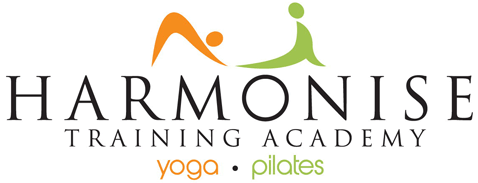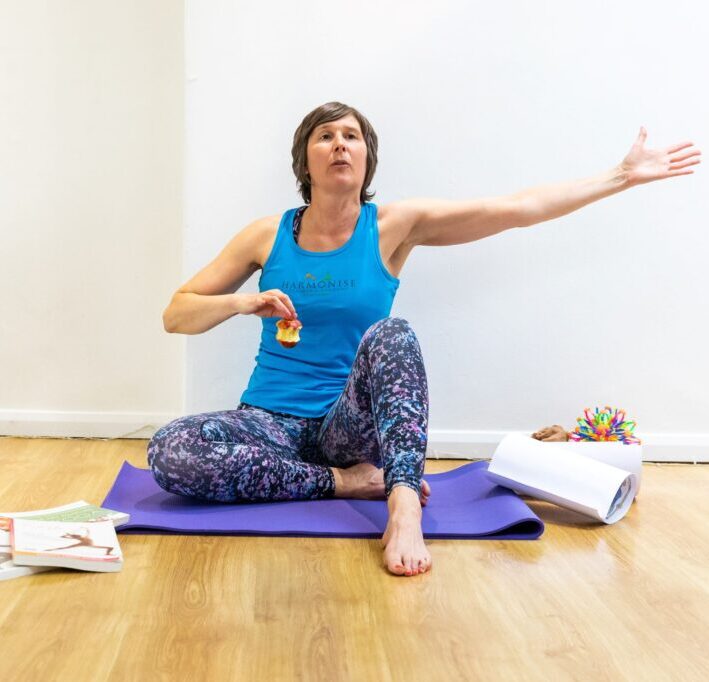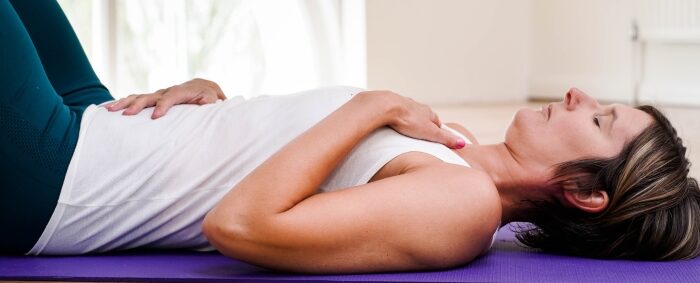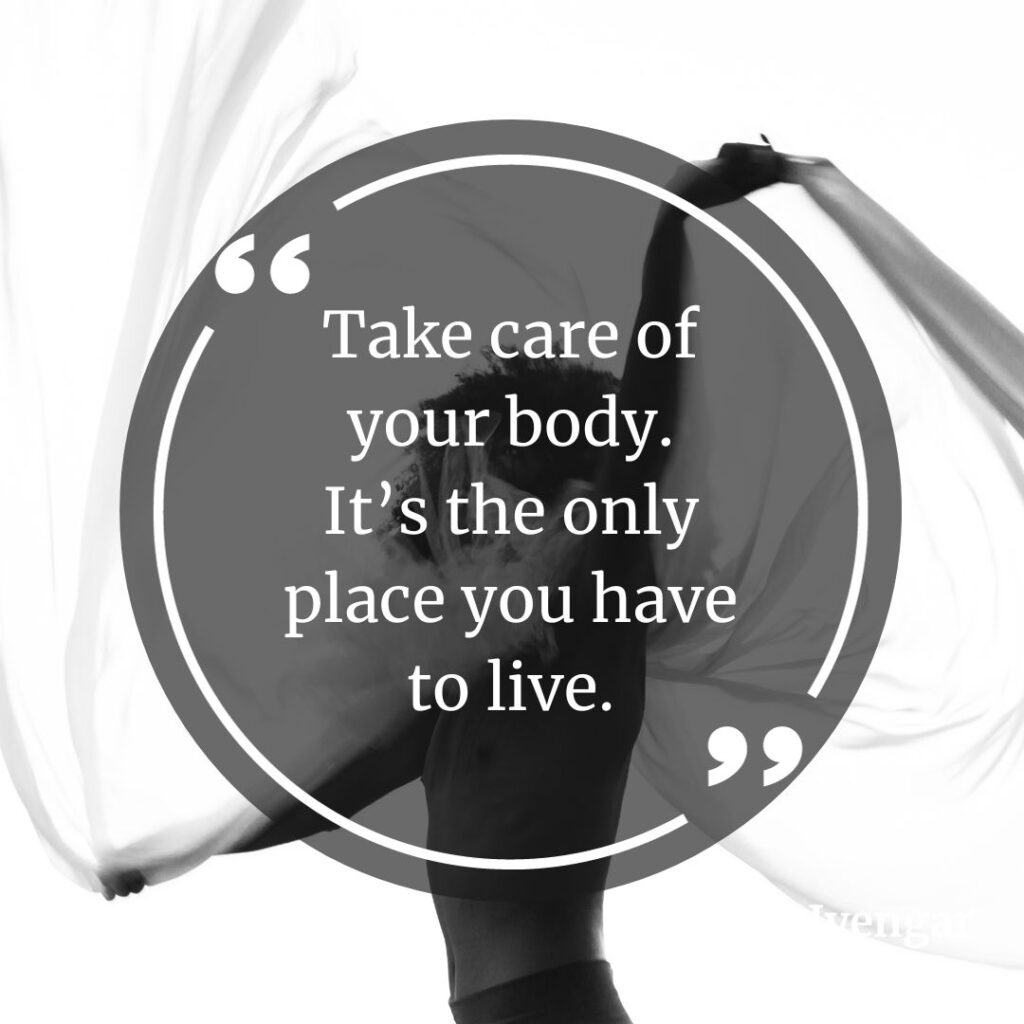12 Teaching Tips for Empowering Pelvic Health: Understanding the core and pelvic floor
Pelvic health is crucial, especially for women. It is estimated that 50% of women over the age of 50 have some form of a prolapse; and over a third have some form of incontinence.*
Although pelvic health issues are not exclusive to women, factors such as pregnancies, hormonal changes during menopause, aging, medications, posture, stress, and lifestyle choices frequently act as catalysts. Like many chronic health conditions, these issues rarely stem from a single factor but rather result from a combination of various elements.
* Did you know? There are 3 types of prolapse: bladder, uterine and colon, and 4 grades within each type. And there are 4 types of incontinence – stress, urgency, postural and over active bladder.
Attention grabbing ‘buzz-word’ headlines on social media are ever increasing, with titles like ‘restore your core’ and the more imaginative ‘empower your flower’! But what does it actually mean, and how can we incorporate recent insights from fields like myofascia, neurofascia, somatics and neuroplasticity into our classes?
To address these concerns, it’s vital to grasp the core’s extensive connections, from head to foot. This blog outlines 12 practical tips for teachers on incorporating these concepts in a relatable, accessible, and embodied manner, aimed at supporting pelvic connective tissue and organ health to prevent potential issues proactively, as far as possible.
1. Start from the extremities: Core engagement begins at the feet and extends to the head and neck. Myofascial chains and continuums connect even through the throat, tongue and occiput (back of the neck / base of the skull). Imagine an apple core – the bottom of the apple is the feet, the top the head – the core runs all the way through and everything is connected.
2. Release excess tension: Relaxing feet, hands, and head/neck alleviates pelvic tension. The core extends vertically and horizontally (think fingertip to fingertip), connecting your entire body. The tone and flexibility of connective tissue influence pelvic floor health, particularly in areas like feet, hands, throat, tongue, neck, and occiput, which are directly linked to the pelvis. (It is more common to be hypertonic than hypotonic in the pelvic floor).
3. Breathe mindfully: Visualise your ribs and sitting bones expanding gently with each inhalation, working together synergistically. This helps to relax the pelvic floor, which often experiences tension due to poor posture, dysfunctional breathing, and excess downward abdominal pressure. Think of it like having a bent arm under constant weight – the bicep would be chronically contracted and tight, leading to secondary tension. Over time, the nervous system could even ‘forget’ that the elbow can extend leading to loss of full range of motion over time.
4. Create space in the body: As you exhale, ribs draw in and down, sitting bones move closer together, bringing the pelvic floor to a neutral position. When you also lengthen the spine, creating space between the vertebrae, you naturally engage Transversus Abdominus. In turn, this connects with and activates the pelvic floor, and you’ll feel a lift through the entire fascial chain.
5. Apply opposing forces: Pressing heels down whilst standing and leaning slightly forwards activates the back chain (the glutes attach to the pelvic floor). Extending, at the same time, through the crown of your head will invite natural engagement, stability and activity into the entire network. This principle can be applied all over the body and in different positions – kneeling, supine, side lying etc
6. Address rib position: When flaring the ribs, you lose connection with the pelvic floor and deep stabilising core muscles (common with an anterior pelvic tilt) and if they are pressing down excessively it can cause a tight diaphragm, breathing restrictions, chronically contracted pelvic floor and deep stabilizing core muscles (common with a posterior pelvic tilt or hyper kyphosis). Correct posture and assist students to establish a neutral pelvic placement.
7. Neutral pelvis is key: Encourage a neutral pelvis before engaging pelvic floor muscles. Cuing a student with a posterior pelvic tilt to activate their pelvic floor may exacerbate existing tension. Conversely, cueing a student in an anterior pelvic tilt to engage their pelvic floor or lengthen their spine might not effectively activate the pelvic floor due to misalignment, resulting in sustained core weakness. To address this, it’s imortant to observe students’ posture and, with their permission, offer hands-on assists. Encourage students to establish a neutral pelvic placement prior to and during movement to ensure proper muscle engagement and alignment.
8. Visualise activation: If no activity is felt in the neutral position, despite creating space and lifting gently, try this technique: flex the feet at a 15-degree angle and hold a brick or soft ball between your knees without applying pressure. Then, visualise lifting from both above and underneath, as if you were turning on a dimmer switch. This encourages activation while preventing over-contraction.
9. Observe the navel: If the naval is lifting up, the pelvic floor is lifting and therefore engaging.
10. Manage downward pressue: Avoid cues like ‘navel to spine,’ which can increase downward pressure and cause over-contraction, both of which can increase risk of prolapse. This may also occur if you progress students too quickly, often indicated by a ‘doming’ abdomen’. Lateral breathing, slowing down movement, lengthening the spine and a soft/subtle engagement is the antidote which reduces abdominal pressure.
11. Relaxation after engagement: Ensure students relax after engaging, helping them embody the sensation of relaxed versus engaged TA and pelvic floor muscles. This approach assists individuals in developing a better understanding of their pelvic floor and gaining greater control over its functions.
12. Slow, gradual engagement: 75% of pelvic floor muscle fibres are slow-twitch. This means they require gradual contraction for full engagement, toning, and strengthening. Rapid squeezing skips activation of these fibres. Slowing down the breath, especially lengthening the exhalation, enhances engagement. Chronic stress and trauma can worsen pelvic floor dysfunction, emphasising the need for relaxation techniques. Incorporating a soothing voice, mindfulness, breathing exercises, meditation, body scans, or relaxation methods in your class is as crucial as physical practices.
Enhance your teaching skills and promote pelvic health
Remember, these tips apply to all client groups.
It’s essential to have the right training to teach functional and anatomically sounds classes safely and effectively to minimise risk of pelvic health issues. Unless you have specific training, it is important to refer any students with symptoms that are new, ongoing or getting worse to a pelvic health specialist.
If you’re seeking to complete your Pilates or Yoga teacher training and aspire to teach in a holistic, integrative, embodied way that promotes optimal health and well-being, all while incorporating trauma-sensitive language, Harmonise could be your ideal training school.
We focus on teaching techniques that strengthen, lengthen, tone, and rebalance both body and mind. Explore our Yoga teacher training here and our Pilates teacher training here.
If you’re already teaching, I offer six CPD workshops aimed at elevating your teaching skills. These workshops are intensive 3-hour sessions that complement each other.
Coming up this year
Two complementary workshops, Fascia and Movement (14th November) and Fascia and Stability (12th December) integrate the latest research on bio-tensegrity, myofascia, neurofascia, somatics, stress, and trauma.
Coming up in 2024: new dates scheduled
Observing posture and hands on assists workshops – for yoga teachers (6th Feb), and for Pilates teachers (13th Feb). Enhance confidence in observing posture, recognising patterns, and using cues and/or props effectively.
The complementary Stretch and massage assists workshop for both Yoga and Pilates instructors is also back due to popular demand on 27th Feb.
As always, if you have any questions or are interested in taking a teacher training and would like to ask questions, then please don’t hesitate to get in touch.
Article by: Clare Francis






